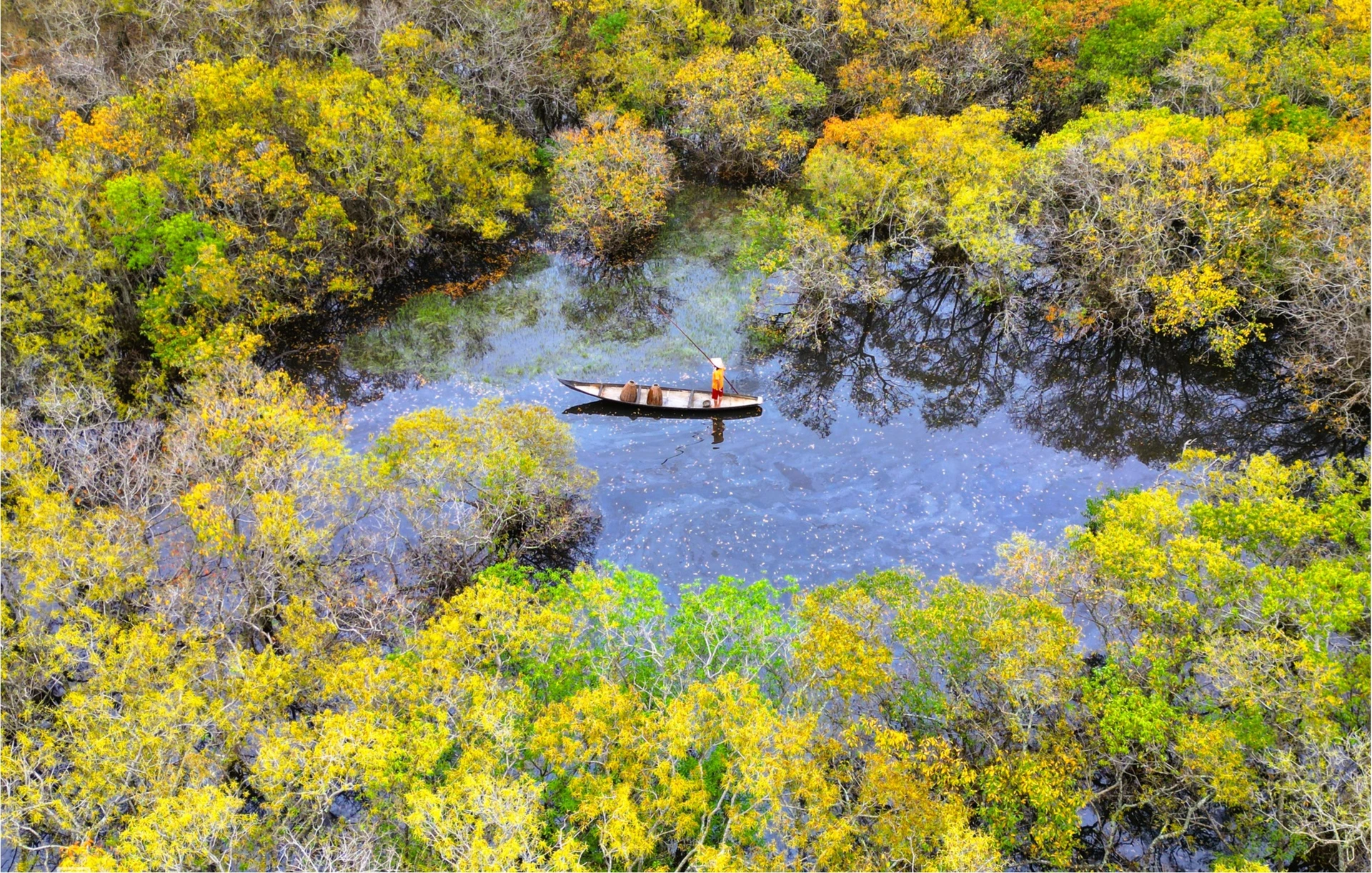Charming scenery in Truc Lam Bach Ma Zen Monastery
Truc Lam Bach Ma Zen Monastery is located in the middle of Truoi Lake, right on Linh Son mountain. Not only is it a Zen monastery belonging to the Truc Lam Yen Tu Zen sect on the South Central Coast, this is also a famous scenic spot of Hue. Standing on the top of the monastery, you will be able to see the shimmering and fantastical lake like a giant jade mirror, illuminating the charming view of the clouds and sky. Just step down the boat pier and then pass the 172 steps to reach the three gates. Coming here, you will freely experience the peaceful atmosphere in the middle of a fairyland, temporarily escaping from the noisy and bustling life. Known as one of the first meditation monasteries in the Central region, Truc Lam Bach Ma gives travelers a sense of escape from the world. Standing on the top of Bach Ma, the clouds were covered with white, and the scene became hazy like a fairyland. From the city center, you go south about 30km and you will meet Truoi Bridge. On the right will be the road leading to Truoi Dam. From the boat dock, you take a boat or boat to the Zen monastery. The road to the monastery is relatively convenient because it is only about 10km from National Highway 1A, about 35km from Hue city center and about 65km from Da Nang city. Although the path is not too difficult, to get to the gate of the monastery, you have to take a boat for about 15 minutes to get there. However, you don't need to worry because the ferry terminal always has life jackets and safety measures for visitors. Walking all the way down the slope in the middle of the hill, the Zen monastery gradually appears as a rich and vivid natural picture with unruly forests, trees and flowers adorning the flavor. Below, the sound of the stream rumbling like a forest music combined with the sound of all birds echoed. It feels like you are lost in the void surrounded by poetic nature. The pagoda campus is divided into 3 main areas including: outer monastery, monastic monastery, nunnery. This project is built very superficially but still retains the beauty of being located in the middle of Truoi Lake, in the Bach Ma mountain range. In addition, you can also see with your own eyes the giant statue of Shakyamuni Buddha sitting on the top of the mountain in front of the pagoda. This work leaves an impression and has a very deep impression on tourists from all over the world because of its location in the middle of a sacred scenery. Visiting the monastery you can also combine with other tours such as: experiencing Bach Ma National Park, enjoying Truoi Lake, enjoying the peace and serenity of the sacred forest. According to employees


























